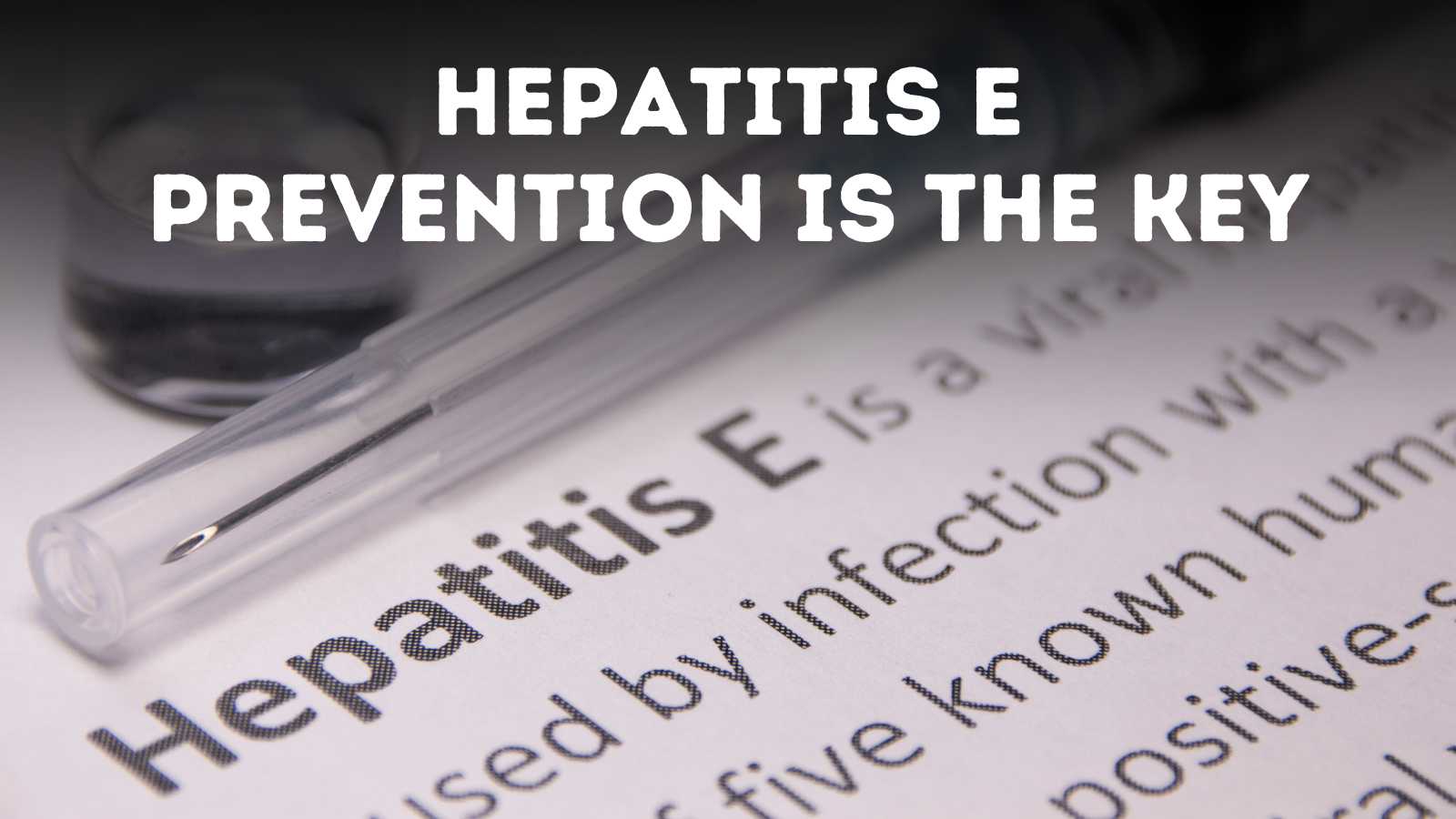27/12/2022 / Health and Fitness
Hepatitis E: Prevention is the Key
We should follow preventive steps because it is the only way to save ourselves from Hepatitis E. Let us learn how.

Table of Content
Understanding Hepatitis E
It refers to the inflammation of the liver caused by infection with the hepatitis E virus (HEV), mainly transmitted via the fecal-oral route, principally via contaminated water.
The disease is highly prevalent in East and South Asia.
Hepatitis E Factsheet
Let us know risks, genotypes, causes, symptoms, diagnosis and treatment of Hepatitis E infection.

Who are at Risk of Hepatitis E virus infection?
The people who are at high risk of Hepatitis E virus infection are:
People of age group: 15-44 years
Pregnant women
Genotypes of Hepatitis E Virus
The genotypes of the Hepatitis E virus are:
Genotype 1 in Asia and Africa
Genotype 2 in Mexico and West Africa
Genotype 3 in the United States
Genotype 4 in Taiwan, China
Genotype 7 in liver transplant recipients in UAE who ate camel meat and milk.
Some of the important aspects of the Hepatitis E virus genotype are:
Sporadic cases are caused mostly by the genotype 1 virus, and much less frequently by genotype 2 virus. These are caused by contaminated water.
In areas with better sanitation and water supply, hepatitis E infection is caused by genotype 3 virus. It is related to undercooked animal meat in such cases.
In immunosuppressed people, it is caused by genotype 3 or 4 HEV
Causes of Hepatitis E
The causes of Hepatitis E virus infection are:
Poor sanitation
Poor water supply
Crowded camps/houses/refugees
Undercooked meat
Shellfish – outbreak in cruise ship passengers
Symptoms of Hepatitis E
Symptoms of Hepatitis E virus infection are:
Fever
Fatigue
Loss of appetite
Stomach pain
Jaundice
Dark urine
Clay-coloured stool
Joint pain
Diagnosis of Hepatitis E
The diagnosis of Hepatitis E is based on travel history, jaundice, undercooked food history and serological and nucleic acid test.
Travel history: This includes travel history from the Hepatitis E-endemic area.
Jaundice: This includes the History of jaundice. There may be unexplained symptoms of liver injury.
Undercooked food history
Serological and nucleic acid test: Presence of antibody against HEV or HEV RNA in the serological and nucleic acid test
Treatment of Hepatitis E Infection
A proper treatment plan to recover from Hepatitis E comprises of:
Rest
Nutrition
Fluid
Avoid alcohol
Avoid over-the-counter drugs
Anti-virals
Hepatitis E: Prevention is the key

It is important to prevent Hepatitis E, and it is possible by following the proper care steps. These are:
Drink clean water
Good sanitation
Eat properly cooked food
Good immunity
Eat healthy. Stay healthy.
Take-Home Points
All you need to know about the Hepatitis E virus is that it occurs in an infected person’s stool. You can get it by drinking contaminated water and undercooked food.
Some causes of Hepatitis E are raw or undercooked pork, eating wild boar meat, eating shellfish and weakened immunity.
Its symptoms include tiredness, loss of appetite, stomach pain, nausea and jaundice.
There is no vaccination available, and without any complications, you can be recovered. You can prevent Hepatitis E.
References
FAQ on Hepatitis E
The WHO website mentions that a vaccine to prevent hepatitis E virus infection is developed and licensed in China.
It is important to maintain quality standards for public water supplies; and to establish proper disposal systems for human faeces, according to the WHO
Immunosuppressed people benefit from ribavirin, an antiviral drug.
Comments ( 0 )
No Comments
Leave a Comment
Related Posts
Hepatitis A: Overview, Causes, Symptoms, and More
We should have awareness about Hepatitis A so that we could prevent it.
Dr Aditi Yadav
Unsaturated vs saturated fat: Which is better for your health?
Fats are considered enemies by many fitness enthusiasts. But what if we say that fats are good for health?
Diarrhea in Pregnancy - Treatment and Home Remedies for Diarrhea during Pregnancy
Get relief from diarrhea during pregnancy. Learn about safe treatment and home remedies to ensure a healthy pregnancy journey.
Health & Wellness Tips
Subscribe to our blog